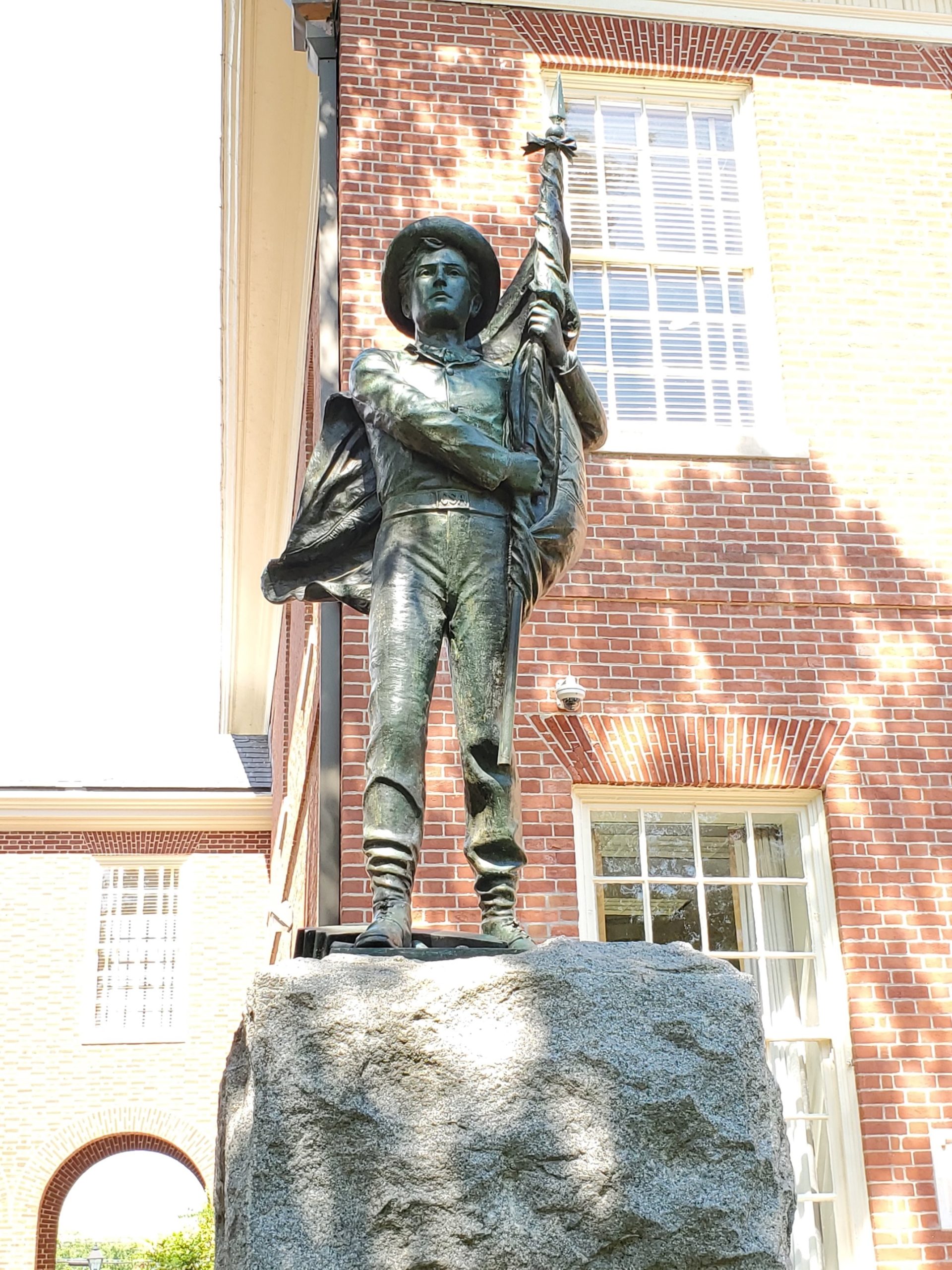
My wife, Elizabeth, comes from a village called Greenwich in northern New York state. Among the keepsakes preserved by her family is a box of letters from her great-great uncle Reuben Stewart, a young draftee who served in the 123rd New York regiment as it marched through the South, leaving a trail of desolation, suffering, and death.
One of those letters, undated, reads as follows:
“Enclosed, please find some scraps of letters and some confederate postage stamps that I picked up behind the breast works of the ‘rebs’ near Williamsport, also the ‘Note’ for a sermon that I got in a church in a place called Greenwich that we came through the other day, & also a song, ‘Hard Tack’ &c. Yours, R”
The 123rd came to be known as “Sherman’s clean-up crew.” They stole everything of value and destroyed what they couldn’t carry away. As the letter attests, they did not mind ransacking churches, even in a place with the same name as their own hometown! One of the enclosed “scraps” bears a poem apparently composed by one of the “rebs.”
Where Home Is
Home’s not merely four square walls,
Tho’ with pictures hung and guilded:
Home is where affection calls—
Filled with shrines the heart hath builded.
Home!—go watch the faithful dove
Sailing ‘neath the heaven above us;
Home is where there’s one to love
Home is where there’s one to love us.
It is likely that the young man who penned those lines never saw his loved ones again. His last thoughts came to rest in a blue-coated magpie’s random horde. I thought to share them with a wider audience because they represent the antithesis of the crass destructiveness of the Third Reconstruction that is tearing down our public art in the name of social justice.
The latest target of the destroyers is the modest bronze figure that stands in front of the courthouse in Easton, the seat of Talbot County on Maryland’s eastern shore. Erected in 1916 with funds from local donors, the statue honors “The Talbot Boys,” who volunteered to fight for the Confederacy. The citizens of Talbot county had voted against secession in 1861, but they soon found themselves under the heel of Lincoln’s army of occupation. The brutality of the federal invasion of Maryland in April of 1861 and the threat of conscription into the Union army after March of 1863 led many young Marylanders to cross the Potomac to aid their beleaguered southern brethren.
On September 14, 2021, the Talbot County council voted 3-to-2 to remove the statue, largely as a result of legal pressure. The ACLU and a big law firm called Crowell & Mooring brought a lawsuit claiming that the monument is unconstitutional. Plaintiff Kisha Petticolas, an assistant public defender in Talbot County, regurgitates the familiar line that the statue represents “hate, oppression and white supremacy.”
“My clients who are walking into the courthouse, hoping to be given a fair shot at justice, are walking onto a courthouse lawn that still celebrates the Confederacy,” Petticolas said. “It is beyond time for this statue to be removed from the courthouse grounds.”
(Even the streets are named after slaveowners: Washington, Goldsborough… Oh, wait. That comes later. First, we have to get rid of the hateful statue.)
Honesty ought to prompt her to admit that her clients didn’t even knew what the statue was until protesters drew attention to it. She also fails to mention that there is an equally prominent statue of Frederick Douglass on the other side of the front walkway. What does an accused criminal think of the jurisprudential influence of a hundred-year-old veterans’ monument and a ten-year-old effigy of a black abolitionist? How do his thoughts on such matters influence the course of justice? These are questions of such deep absurdity that they curdle the brains of 60 percent of our councilmen.
Every day, every mouth on the big-screen TV is telling blacks that the system is rigged against them and that their woes are the product of structural racism. How can the presence or absence of one statue possibly alter their faith in that message? Maybe it would be more consistent to have a statue of a scowling overseer with a whip. That would be a more helpful reminder of the built-in unfairness of the system than this unarmed, fresh-faced boy holding a flag and representing “youthful courage and enthusiasm.” I see his face when I read the poem left behind on the breastworks near Williamsport and wonder whether he survived that battle. He will not survive this one. Like the looted church, this modest “shrine that the heart hath builded” will fall to the vandals.
When the boy on the pedestal is gone, the wreckers will find some new object of hatred. Citizens with ancestral roots in the county will grieve the loss. They may even persuade themselves not to hate the people who slandered them and stole a piece of their heritage. They will learn to forgive the next slander and to shrug off the next theft. Eventually, there will be nothing left but the lies and the mind-controlled slaves who believe them.






Three votes should not decide this or any matter of such great importance. Do not let these communist radicals steal our history, our heros, our loved memory.